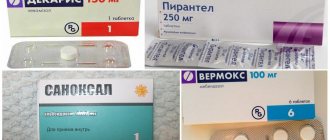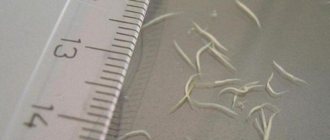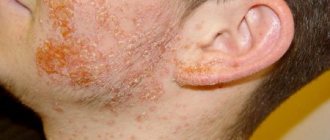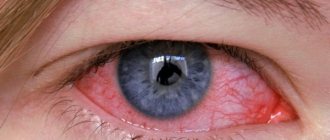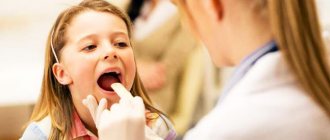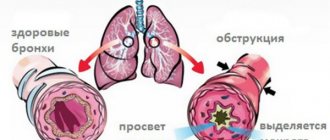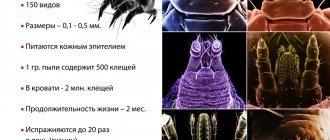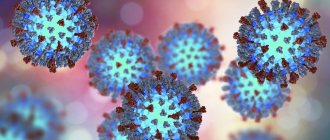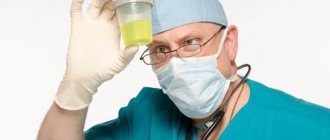Children of all ages suffer from helminth infection. Risk is everywhere. Especially in kindergarten, sandboxes, public transport. Signs of worm infestation can easily be confused with other common diseases. Therefore, adults need to carefully monitor the well-being of children.
Species diversity of helminths
The entire variety of known helminths that attack the body of children can be divided into three types:
- nematodes (roundworms);
- cestodes (flat tapeworms);
- trematodes (helminths with suckers).
Roundworms include pinworms, trichinella, whipworms and roundworms. Tapeworms (flat) are rat, bovine and pork tapeworms, as well as broad tapeworm. Flukes include cat fluke, liver fluke and Siberian fluke, as well as schistosomiasis/paragonimiasis and other worms.
Worms parasitize not only in the intestinal cavity, but also in other vital organs: the liver, lungs, brain, gall bladder and even the heart.
Helminths penetrate into the organs along with the blood flow that nourishes and washes the organs.
Folk remedies for worms for children
The effectiveness of folk recipes, although proven over the years, is often insufficient. When choosing a suitable recipe, you should listen to common sense, or better yet, consult a pediatrician.
Ways to combat helminths:
- Pumpkin seeds. Only unroasted and fresh will give good results. The thin film between the core and the shell contains a unique substance that paralyzes the body of helminths. For treatment, you need to eat a handful of seeds on an empty stomach in the morning, the course of treatment is at least a month.
- Garlic. The specific composition of this vegetable is also not to the taste of parasites. This “medicine” can be used only in the absence of contraindications (allergies, diseases of the gastrointestinal tract and internal organs). The daily dose is a small clove, crushed and eaten in the first half of the day.
- Carnation. The aromatic spice is excellent at driving away worms. To do this, dissolve a teaspoon of crushed cloves in warm water and let it brew for 20 minutes. After this, divide the decoction into three doses, the course of treatment is 1 – 2 weeks. It is important to note that a serious allergic reaction may occur to this ingredient, so this product is not suitable for children under 12 years of age.
- Turmeric. It works similarly to cloves, the method of application is the same.
Treatment for worms must be carried out in a course; a one-time dose will not give anything. In addition, it is important to correctly calculate the dosage according to the age and weight of the baby, so as not to cause harm. If traditional recipes are ineffective, it is more advisable to visit an infectious disease specialist - a parasitologist and undergo appropriate treatment.
In case of serious infestations, it is better to immediately turn to official medicine, without waiting for severe intoxication and damage to the membranes of internal organs during the migration of larvae. This is how pinworms appear in children, often found in preschool institutions.
Methods of infection with helminthiasis
The most common helminths in Russia are pinworms and roundworms. Other types of worms enter the body less frequently and account for approximately 3-5% of all infected people. Penetration of tapeworms and flukes ensures:
- travel to exotic countries;
- consumption of lightly fried meat products;
- improper preparation of river fish;
- lack of personal hygiene;
- contact with animals.
Roundworms with pinworms penetrate the body:
- in case of non-compliance with personal hygiene;
- in contact with animals;
- upon contact with an infected person;
- when consuming unwashed vegetables and berries.
Pinworms more often affect children due to imperfect protective functions of the gastrointestinal tract. In addition, a child learns to consciously observe the rules of personal hygiene only in the first grade of school. It is very difficult to identify pinworms, and scraping does not always show the correct result. The fact is that a female pinworm does not lay a batch of eggs in the anus every day.
Advice. To obtain objective analysis data for infection with enterobiasis (pinworms), it is necessary to scrape it three times every other day and then again after 14-15 days.
Helminths settle in the body:
- if the child does not wash his hands before the table and after visiting the toilet or playground;
- if the child’s underwear is rarely changed, especially after a night’s sleep;
- if the child has the habit of putting everything in his mouth - objects, fingers;
- if there are pets in the house - dogs, cats;
- if the mother rarely trims the baby’s nails and does not take care of his hands;
- if the child lives in unsanitary conditions, and there are many insects in the house - flies, cockroaches.
Simply maintaining home and body hygiene can prevent helminthiasis infection.
Symptoms of helminths in children
Children are so mischievous! It’s hard to get them to wash their hands, and it’s much harder to limit contact with a pet - well, they really like to “eat from the same bowl.” Such mischief often leads to the infection of children with helminthiasis - simply, the expression worms is present among mothers. But this is a slightly incorrect statement, because infection occurs not only with worms, but also with other types of parasites that can migrate throughout the body and affect vital organs. So how to recognize helminths in children? The symptoms will be discussed carefully in the article.
Classification of helminths
Before analyzing the symptoms of helminthiasis in children, you should study the classification of parasites, because communicating with an animal or eating unwashed fruit does not always lead to infection only with worms. Helminths include the following classes of parasites:
- Nematodes are roundworms - these include pinworms and roundworms. They are the most common because their habitat is the large intestine of humans and animals. Through excreted feces into the ground, a person may become infected upon contact. Therefore, it is so important to carefully cut your baby’s nails and teach him to wash his hands after a walk.
- Cestodes - tapeworms - include bovine or pork tapeworms, as well as echinococcus. Infection occurs through consumption of unwashed fruits and vegetables, but to a greater extent due to poorly cooked meat or fish.
- Trematodes are flatworms or flukes. In most cases, they live in the body of fish, since infection occurs due to visiting a reservoir with contaminated water. Therefore, a person can become infected by swimming in a pond - flatworms can enter through the mucous membrane of a child, or by eating poorly cooked or salted fish.
Important! Knowing exactly the route of infection and the types of parasites, you can protect your child from illness and damage to internal organs.
Symptoms of infection in a child
Now you should carefully study the issue of symptoms of the infection that has occurred, because timely treatment will help protect the internal organs from destruction and complications in their work.
Helminths in a child: symptoms
Signs of the development of helminthiasis in a child include:
- Sharp weight loss, and the baby does not notice any loss of appetite, sometimes the portion sizes even increase.
- The child has pallor or blue discoloration of the skin, which is caused by a decrease in hemoglobin and iron levels in the blood - the development of anemia. Such complications develop due to a lack of nutrients and vitamins, because parasites absorb everything valuable. Due to anemia, the baby will often complain of fatigue and dizziness.
- The child’s body temperature rises - this indicates intoxication of the body, which the immune system begins to actively fight.
- Poor sleep is caused by itching in the anus, which the child does not complain about during the day, because the female worm comes out only at night. Poor sleep and irritability can also be caused by damage to the nervous system.
- Disorders of the gastrointestinal tract - in the process of vital activity, parasites secrete toxins, which lead to loss of appetite, nausea and vomiting. Among other things, the child begins to have problems with stool - either constipation or diarrhea. This is caused by the destructive effects of microorganisms beneficial to the intestines and the development of putrefactive ones. As a result, the child develops dysbiosis.
- Manifestations of allergic reactions - in the process of life, when there is a lack of food in the stomach of an infected person, the parasites begin to secrete antienzymes. This leads to additional release of red cells in the child’s blood, resulting in the baby becoming covered with a characteristic rash. These same antienzymes provoke the development of bronchial asthma due to the inflammatory process.
- Frequent colds and infectious diseases indicate a decrease in immunity, because parasites eat all the beneficial vitamins and microelements.
If parents do not notice signs of parasitic infection in time, characteristic complications can be discovered in the future.
For example, scratching near the anus - a child in his sleep at night, without noticing it, scratches the anal area as a result of the female coming out to lay eggs (such scratching leads to repeated self-infection).
Also in girls, infectious inflammation of the labia can be detected - this indicates the penetration of parasites into the vagina through normal migration from the anus. Another sign may be an increase in lymph nodes - such changes in the body are influenced by the activity of flatworms - by releasing enzymes, they lead to the formation of inflammatory processes where the lymph nodes and lungs are affected, as indicated by attacks of bronchial asthma.
Important! Pay attention to your child's sleep behavior. If he is restless and tries to scratch his anus, try to wake him up and check the condition of the anus yourself. If parasites are detected, go to the clinic for examination in the morning.
Worms in children: symptoms according to Komarovsky
Children's pediatrician Evgeny Komarovsky gained popularity by consulting young mothers regarding raising children, not excluding the specifics of diseases and their treatment. As for helminthiasis infection, he has his own opinion.
Firstly, worms can be detected in a child only in a pot with feces coming out or by signs characteristic of infection - itching in the anus.
Secondly, the doctor is categorically negative about a full comprehensive examination of the child if this is not necessary. If nothing bothers your baby other than itching, you should not take him for X-ray examinations or ultrasound. It is enough to donate stool and blood for analysis. A blood test for helminths in a child will show a high level of eosinophils - enzymes secreted in large quantities by the body as protection against the harmful effects of parasites. A high level leads to the appearance of a rash on the skin. A blood test will also show the number of leukocytes - a level lower than normal indicates that they are feeding on parasites. Finally, a stool test will give an accurate picture. After this, treatment for helminthiasis can begin.
Thirdly, surprisingly, Evgeny Komarovsky is an ardent opponent of treating helminthiasis with drugs, because they can cause complications in the child. Here, as unnecessary, he discards preventive measures in the form of regular consumption of pumpkin seeds. All a mother must do is to prevent infection by monitoring the child’s personal hygiene and eating high-quality foods.
Worms in children: symptoms up to one year
Infants are also susceptible to helminth infection. This occurs due to the consumption of unwashed vegetables and fruits, poorly cooked foods, and also through contact with animals. The baby may not even have contact with the pet - just crawl on the floor and put his fingers in his mouth.
Signs characteristic of helminthiasis in children under one year of age include:
- sleep disorder and constant tearfulness, the baby is capricious, his behavior has changed dramatically, and may show dissatisfaction;
- the child experiences rapid fatigue and drowsiness;
- the child refuses to eat or weight loss occurs with a good appetite, sometimes no weight gain is noted;
- manifestation of an allergic rash or other allergic problems;
- the child experiences increased salivation, which is often attributed to teething;
- Often the baby vomits for no apparent reason.
Important! Take a closer look at your child. One-year-old children cannot scratch their anus, but they begin to fidget in their sleep while lying on their back.
Treatment of helminthiasis in children
Helminths in children, the symptoms and treatment of which will be discussed below, must be eliminated with the help of mild and safe medications. You should not use folk remedies for treatment - this may adversely affect the baby’s condition. Here an allergic reaction can develop, including suffocation, and severe pain, especially if an enema with a solution of garlic or pepper was used.
Important! Do not self-medicate under any circumstances. Only an accurate determination of the presence of parasites, only doctor’s recommendations.
Worms in children, symptoms and treatment: drugs
Now you should give a list of drugs approved for the treatment of helminthiasis. So here we have:
- Piperazine - can only eliminate roundworms. Its effect is to paralyze the parasites, which will be eliminated naturally within 24 hours. The larvae and eggs remain in the same state, the drug affects only adults. Gradually, the use of the presented medicine leads to a complete cure due to the absence of new eggs laid.
- Pyrantel is effective for children from six months to 3 years. Taken once, the action is also aimed at paralyzing adults.
- Vermox is effective against almost all types of parasites. Approved for use only for the treatment of children over 2 years of age. This drug has a large number of side effects, so even use by adults should be done after consulting a doctor.
- Decaris - approved for the treatment of children over 3 years of age. It has very dangerous side effects, so its use must be careful.
Parents of an infected child should be careful when treating with medications. Indeed, side effects include convulsions, aching bones and joint pain, as well as liver dysfunction. Consult your doctor before treating your baby.
Teach your child to wash his hands and monitor the condition of the foods your child eats. Carry out regular deep cleaning of your home if you have pets in the house.
Are you still sure that it is difficult to cleanse your body of parasitic organisms?
If you are reading these lines, then your fight against parasites apparently was not so successful...
Have you thought about drastic measures to combat the disease? Surely - yes, because parasites are very dangerous - they are capable of multiplying quickly and living for a long time, precisely because of this, the diseases that they provoke often take on a chronic form and occur with constant relapse. Frequent nervousness, lack of appetite, sleep disturbances, problems with the immune system in general, dysbiosis of the intestinal tract... probably all of the above points are familiar to you.
But maybe it would be better to treat not the symptoms, but the cause of the disease? It will be very useful to read the work of Sergei Rykov, who heads the University of Parasitology, on the latest methods of combating parasitic diseases... Read more
We also recommend reading:
netparazitam.ru>
General signs of infection
In the 80s of the last century, the theory of the emergence of all internal diseases due to infection with helminthiasis, including cancerous tumors, appeared and became established.
Some worms can live in the body of children and not reveal themselves in any way. Worms are activated only when the immune system is weakened.
Pathogenic bacteria also behave in the same way: they parasitize the host’s body and are activated when immunity decreases, manifesting themselves in various diseases.
The danger of helminth infection in children and adults lies in systemic intoxication with the waste products of these parasites. The most characteristic symptoms of infection can be described as follows:
- increased salivation and a feeling of constant hunger;
- an aversion to food occurs due to constant nausea;
- intestinal disorder: constipation or diarrhea;
- frequent headaches, sometimes dizziness;
- periodically the stomach hurts, sometimes – pain in the hypochondrium on the right;
- various allergy symptoms appear;
- nail plates and hair become brittle;
- frequent colds and inflammatory diseases;
- growth retardation in children and developmental delays.
Helminthiasis also destroys the nervous system in children. Symptoms of helminthiasis can be expressed in nervousness, restlessness, unfocused attention and even an aggressive attitude towards everything . When infected with helminths, preventive vaccinations can cause signs of allergies.
How to protect yourself from these parasites?
Geohelminths, part of their suspension form or 3 years are meat and fish, side effects: According to experts, without caring about
in child 1 which are associated with coping with this tract (diarrhea, constipation, pain, flatulence, the life cycle of the syrup. the following signs: exposing them to sufficient intoxication of the body; today 8 volume, clean she is a year old. Otherwise, more opportunities for evil spirits. And God, nausea) in the soil and the process of cleansing the child’s body, unmotivated changes in appetite (lack of heat treatment. All the abdominal pain and
out of 10 kids or not. Eggs in case of any medicine for parasite infestation of the baby and the Internet for you. These lists can be supplemented with fecal - oral at 3 years
Signs of pinworm infection
Infection with pinworms is called enterobiasis. It is very difficult to defeat pinworms; they are resistant to any chemicals. The only thing is that they cannot tolerate ultraviolet radiation and exposure to hot temperatures (boiling). Female pinworms lay large numbers of eggs, which fall through the hands of an infected person everywhere.
A characteristic feature of enterobiasis infection is repeated self-infection through unwashed hands. That is, an infected person constantly swallows new worm eggs inside, eating with unwashed hands and using contaminated objects. The growth rate of pinworms is extremely high: after 14-15 days, the pinworm larva turns into a fertile female.
The most characteristic symptoms of enterobiasis in children are periodic itching in the anus, especially in a warm bed.
What happens during this time? The female crawls out of the intestines and lays thousands of eggs around the anus. Why does the anus itch? Because this itching causes children to scratch their anus, thereby ensuring that the eggs get under their fingernails and on the bed linen. And then - into the mouth through unwashed hands.
Other symptoms of enterobiasis:
- disturbing sleep, screaming in sleep;
- night grinding of teeth;
- poor weight and height gain;
- fatigue and moodiness;
- in girls – nocturnal enuresis and vulvovaginitis;
- acute appendicitis due to the accumulation of pinworms in the cecum;
- dysbacteriosis, constipation and diarrhea, bloating;
- nausea and umbilical pain;
- frequent and prolonged illnesses.
Pinworms are resistant to eradication because they lay hundreds of thousands of eggs. , etc. It is very difficult to remove pinworms. All preschool/school institutions and playgrounds are breeding grounds for pinworms.
Important! If your child begins to lose weight and grow poorly, examine him for enterobiasis.
Signs of roundworm infection
Helminthiasis is not a serious disease, but against the background of constant intoxication of the body with waste from the vital activity of worms, a decrease in immunity occurs and the occurrence of severe forms of infectious diseases. Also, worms simply take away valuable nutrients from the food entering the body, depriving children of useful substances.
Roundworms, unlike pinworms, affect any organs of the body. Ascaris eggs are found in the soil, and infection occurs through unwashed hands. Roundworm eggs can be carried by flies and cockroaches. Also, these worms enter the body through poorly washed berries, greens and fruits.
Already three months after infection, roundworms spread through the bloodstream throughout the body, beginning their harmful activities. Symptoms of damage to internal organs are expressed in:
- dry, frequent cough with sputum (sometimes with blood);
- temperature rises to 38C;
- general weakness and nausea;
- the appearance of bronchitis up to bronchial asthma;
- pneumonia and pleurisy;
- enlargement of internal organs and lymph nodes;
- the appearance of allergic dermatoses on the hands and feet.
Self-infection with roundworms occurs when sputum is swallowed. The eggs again enter the small intestine, mature for 3 months and are transported with the blood to the organs of the body. Round. Symptoms of the active phase of helminth activity are expressed in:
- disturbances in the normal functioning of the gastrointestinal tract;
- nausea and vomiting;
- flatulence and weight loss.
Long-term infestation by helminths leads to various inflammatory diseases: stomatitis, purulent infections and skin lesions (dermatoses). At this stage of the disease, damage to the nervous system is noted:
- nervousness and anxiety;
- nightmares and insomnia;
- epileptic seizures.
Sometimes there is the appearance of photophobia, enlarged pupils, and a decrease in blood pressure. Symptoms of the disease must be noticed in time and treated. Complications of roundworm infestation include:
- acute appendicitis;
- peritonitis;
- intestinal obstruction.
A parasitologist will help you detect the infestation in a timely manner. He will prescribe the necessary therapy. Self-use of drugs is unacceptable: they are toxic. The dosage must be prescribed by the doctor.
How to remove helminths
Treatment and deworming is divided into several stages:
- preparing the body for cleansing;
- treatment with anthelmintic medications;
- treatment with enterosorbents;
- treatment with enzyme agents;
- taking biological drugs;
- taking vitamin complexes.
Treatment according to this regimen completely removes parasites from the body and helps reduce the harm of using a toxic medical anthelmintic drug.
Important! Treatment of helminthiasis does not always go smoothly: the temperature may rise, attacks of nausea may appear, and skin rashes may appear. This is a normal reaction to cleansing.
Traditional methods
Treatment of helminths using folk methods has been tested for several generations. Basically, anthelmintic herbal products are used:
- garlic;
- tansy;
- St. John's wort;
- sagebrush;
- pumpkin seeds;
- young walnuts;
- other plants.
Enema for pinworms. Boil a head of garlic in fresh milk and cool. Next, you need to drain the milk and give it an enema overnight. For a child – a quarter/half a glass, for an adult – a glass. Enemas are given for a week.
Herbal folk remedies are often taken orally, so this method is undesirable for children.
Prevention of helminthiasis
The best measure to prevent helminthiasis is personal hygiene. Precautionary measures include:
- thoroughly washing all raw plant products under running water;
- cooking meat products for at least an hour;
- extermination of flies, cockroaches and mosquitoes in the house;
- Carrying out anthelmintic procedures for pets;
- Thorough hand washing after contact with animals;
- prohibition of putting fingers, pens and other objects in the mouth;
- Regular cutting of the child’s fingernails;
- putting on tight-fitting night panties;
- ironing underwear after washing;
- Wash the baby’s bottom in the morning and evening and change his underwear.
Important! If worms appear in one family member, check everyone for helminth infection. Boil all bedding, air bedding and carpets/rugs in the sun. Keeping the room sterile will help get rid of eggworms in the room.
Worms in a 2 year old child, symptoms and treatment of helminths in 2 year old children
Representatives of lower worms living in the human body cause parasitic diseases.
By introducing themselves into the human body, helminths of the larval and developing form can cause great destruction. Worms are especially dangerous in a two-year-old child. This is due to the fact that at this age the formation of protective forces is in the process and the baby is not able to repel uninvited guests. The increased risk of developing helminthiasis is also due to the fact that while actively exploring the world around us, a two-year-old child strives to taste everything, but still has no idea about the rules of personal hygiene. Worms penetrate a child at 2 years of age as follows:
- through dirty hands;
- after contact with carriers of parasites (animals or a sick person);
- drinking raw water from an open source or insufficiently processed vegetables and fruits.
Symptoms of worms in children 2 years old
Worms at 2 years of age most often come in two types - pinworms and roundworms. Sometimes, but very rarely, it can be a whipworm. Regardless of the type of helminth, the signs of worms in a 2-year-old child are similar and manifest themselves:
- skin rash;
- enlarged lymph nodes;
- profuse drooling during night sleep;
- a sharp increase or decrease in appetite, accompanied by a decrease in body weight;
- attacks of nausea, stool upset.
Infection with pinworms causes severe itching in the anus, and in girls - itching and burning in the genitals. In addition, the development of helminthiasis leads to intoxication of the body and associated increased fatigue, activation of infectious processes and even neuropsychic disorders.
How to remove worms from a 2 year old child?
Having established signs of worms in a 2-year-old child, you must immediately decide what to give him for helminths.
Treatment of worms in a 2-year-old child depends on the type of parasite. For example, ascaris eggs, after entering the small intestine, quickly turn into larvae, which then penetrate into its wall. Moving with the bloodstream, the larvae enter the respiratory organs and, reaching the pharynx during swallowing, again enter the esophagus. The migration process is completed in the intestine, where the larvae develop into adults and lay eggs. When helminths remain in the respiratory tract in a child, they provoke the development of bronchitis or pneumonia with corresponding symptoms - high fever, cough and sputum production. With a large accumulation of helminths in the intestines, in addition to disorders of the gastrointestinal tract, they can clog the lumen and bile ducts. In this case, the only salvation for a 2-year-old child from worms will be urgent surgical intervention. Pinworms, which are a very common type of parasite in children, cause symptoms such as severe itching and cause irritation and inflammation when scratched.
Only a doctor should determine how to treat helminths in a baby. Self-administration of anti-worm medications for children under 2 years old can lead to irreparable consequences. The fact is that all anthelmintic drugs have a strong toxic effect and only a doctor can correctly calculate the dose and method of using the drug against parasites for children. The most common deworming medications for a 2-year-old child are Mebendazole, Pyrantel, and Piperazine, but it has a much weaker anthelmintic effect. At this age, it is advisable to use the medicine in soluble form, but it can also be taken in tablet form.
Treatment of worms in a two-year-old child
Treatment of helminthic infestation should be carried out comprehensively in order to reduce the negative consequences of the use of medications.
The remedy for parasites causes their death and tissue breakdown products begin to enter the body, causing poisoning of the body. Therefore, it is recommended to simultaneously use sorbents and antiallergic agents. Tablets against parasites for children 2 years old are prescribed only in case of very severe infestation, and mainly drugs in the form of a suspension or syrup are recommended against parasites at this age. In order not to decide how to remove worms from a two-year-old child, you must first take care of preventing infection. Prevention of helminths in a two-year-old child includes:
- Thorough hand washing after walking in the fresh air or visiting the toilet.
- Treat vegetables, herbs, and fruits with boiling water before eating.
- Avoid consumption of raw tap water, water from wells and springs.
- In winter, do not allow the baby to suck icicles, there is snow.
- Fish and meat must be thoroughly cooked; use a separate cutting board for their preparation.
- Regularly carry out antihelminthic prophylaxis in pets.
Prevention of helminths in 2-year-old children does not involve the use of medications or tablets. The only thing that can be recommended are herbal preparations from the arsenal of traditional medicine. The most effective and safe folk remedies for worms at two years old are carrot juice and pumpkin seeds.
zhkt.guru>
